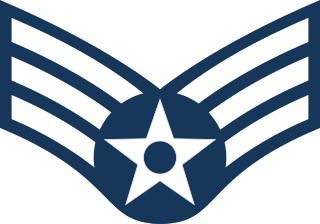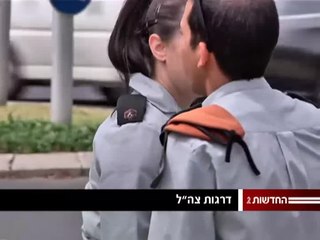This article needs additional citations for verification .(January 2022) |
Senior master sergeant is the military rank for a senior non-commissioned officer in the armed forces of some countries.
This article needs additional citations for verification .(January 2022) |
Senior master sergeant is the military rank for a senior non-commissioned officer in the armed forces of some countries.
Senior master sergeant is the second-highest attainable rank for enlisted personnel of the Philippine Army, the Philippine Air Force and the Philippine Marine Corps (a component of the Philippine Navy).
The rank stands above that of master sergeant and below that of chief master sergeant.
As of February 8, 2019, a new ranking classification for the Philippine National Police was adopted, eliminating confusion of old ranks. The Police Senior master sergeant is third highest non-commissioned officer rank on the service. It stands above the rank of Police Master sergeant and below the Police Chief master sergeant.
| Senior Master Sergeant | |
|---|---|
  Air Force and Space Force insignia | |
| Country | |
| Service branch | |
| Abbreviation | SMSgt |
| Rank group | Non-commissioned officer |
| NATO rank code | OR-8 |
| Pay grade | E-8 |
| Formation | 1958 |
| Next higher rank | Chief master sergeant |
| Next lower rank | Master sergeant |
Senior master sergeant (abbreviated SMSgt) is the second-highest enlisted rank (pay grade E-8) in the United States Air Force and United States Space Force, just above master sergeant and below chief master sergeant, and is a senior non-commissioned officer (SNCO).
According to Air Force Instruction 36-2618, The Enlisted Force Structure:
SMSgts are key, experienced, operational leaders, skilled at merging their personnel's talents, skills, and resources with other teams' functions to most effectively accomplish the mission. SMSgts continue to develop their leadership and management skills in preparation for expanded responsibilities and higher leadership positions. SMSgts normally operate at the operational level of leadership.
Promotion to senior master sergeant is the most difficult enlisted promotion to attain in the Air Force and Space Force. It is the second enlisted grade in which results of a central promotion board is the only factor in selection for promotion. Usually, less than ten percent of eligible master sergeants are selected for promotion to senior master sergeant in most years. Selectees typically have vast technical and leadership experience gained from a broad variety of assignments at both line and staff functions during their careers. Additionally, the successful candidate typically has completed an associate or bachelor's degree in their Air Force and Space Force specialty as well as the Senior Non-commissioned Officer Correspondence Course, and has had his or her latest performance report endorsed by a senior rater, usually a colonel or brigadier general.
in preparation for promotion to the rank of chief master sergeant, senior master sergeants typically assume superintendent duties, overseeing enlisted members' efforts to accomplish a major segment of a unit's mission. They are expected to serve as mentors for non-commissioned and junior commissioned officers.

Public Law 107-107, the "National Defense Authorization Act", establishes senior enlisted strength levels for all branches of the United States Armed Forces. Currently, only 2.5 percent of the Air Force's total active duty enlisted strength may hold this rank. [1]
Senior master sergeants are sometimes referred to by the nickname of "Senior." In the past, this was a casual nickname that was inappropriate in formal situations. [2] However, on 12 July 2018, new Air Force regulations were issued that made "Senior" one of the official terms of address for senior master sergeants, in addition to the pre-existing "Senior Master Sergeant" and "Sergeant" addresses. [3]
Senior master sergeants in the first sergeant special duty serve as first sergeants of larger units than those employing master sergeants as first sergeants. These first sergeants (pay grades E-7 to E-9) are referred to officially as "First Sergeant" (regardless of their pay grade), and unofficially as "First Shirt" or simply "Shirt". [4]

Although the Air Force had been an independent service since 1947, the rank of senior master sergeant did not come into being until the authorization of the Military Pay Act of 1958. This act established the pay grades of E-8 and E-9 but without title. It was not until late 1958 that the title of "senior master sergeant" (and the accompanying rank insignia) was decided upon after the enlisted force was polled. At that time, the senior master sergeant rank had only a single chevron above and six below, and a chief master sergeant two above and six below. In 1994 the Air Force changed its non-commissioned officer insignia so that a maximum of five stripes were placed on the bottom of the chevrons, adding one above to each of the top three grades, resulting in the present form.

The Civil Air Patrol (CAP), a non-profit corporation Congressionally chartered to operate as the civilian auxiliary of the U.S. Air Force, has a quasi-military structure which includes the rank of senior master sergeant. The grade of senior master sergeant is below chief master sergeant and above master sergeant. Former military enlisted personnel who held the rank of senior master sergeant in the United States Armed Forces may retain that rank as members of the CAP. [5]

A non-commissioned officer (NCO) is a military officer who does not hold a commission. Non-commissioned officers usually earn their position of authority by promotion through the enlisted ranks. In contrast, commissioned officers usually enter directly from a military academy, officer training corps (OTC) or reserve officer training corps (ROTC), or officer candidate school (OCS) or officer training school (OTS), after receiving a post-secondary degree.
Sergeant is a rank in use by the armed forces of many countries. It is also a police rank in some police services. The alternative spelling, serjeant, is used in The Rifles and other units that draw their heritage from the British light infantry. Its origin is the Latin serviens, 'one who serves', through the Old French term serjant.
Corporal is a military rank in use by the armed forces of many countries. It is also a police rank in some police services. The rank is usually the lowest ranking non-commissioned officer. In some militaries, the rank of corporal nominally corresponds to commanding a section or squad of soldiers.
Staff sergeant is a rank of non-commissioned officer used in the armed forces of many countries. It is also a police rank in some police services.
A master sergeant is the military rank for a senior non-commissioned officer in the armed forces of some countries.
Sergeant major is a senior non-commissioned rank or appointment in many militaries around the world.

Airman basic (AB) is the lowest enlisted rank in the United States Air Force immediately below airman. The pay grade for airman basic is E-1.
A chief petty officer (CPO) is a senior non-commissioned officer in many navies and coast guards, usually above petty officer.
The chart below represents the current enlisted rank insignia of the United States Air Force.

Senior airman (SrA) is the fourth enlisted rank in the United States Air Force, just above airman first class and below staff sergeant. It has a pay grade of E-4. Between its approval on 30 December 1975 and 19 March 1991, senior airmen wore sleeve chevrons with blue center stars instead of silver to distinguish them from the non-commissioned officer rank of "sergeant", also a pay grade of E-4. The latter was abolished in 1991 and the blue center star was changed to white to conform to all enlisted rank chevrons.
Technical sergeant is the name of two current and two former enlisted ranks in the United States Armed Forces, as well as in the U.S. Civil Air Patrol. Outside the United States, it is used only by the Philippine Army, Philippine Air Force, the Philippine Marine Corps.

A chief master sergeant is the military rank for a senior non-commissioned officer in the armed forces of some countries.

The chief master sergeant of the Air Force is a unique non-commissioned rank in the United States Air Force. The holder of this rank and position of office represents the highest enlisted level of leadership in the Air Force, unless an enlisted airman is serving as the senior enlisted advisor to the chairman. The CMSAF provides direction for the enlisted corps and represents their interests, as appropriate, to the American public, and to those in all levels of government. The CMSAF is appointed by the Air Force chief of staff (AF/CC) and serves as the senior enlisted advisor to the Air Force chief of staff and the secretary of the Air Force on all issues regarding the welfare, readiness, morale, and proper utilization and progress of the enlisted force.
Master gunnery sergeant (MGySgt) is the 9th and highest enlisted grade in the United States Marine Corps. Master gunnery sergeants are senior staff non-commissioned officers (SNCOs) with the pay grade of E-9, equivalent to sergeants major and the Sergeant Major of the Marine Corps.

The military ranks of Israel are the military insignia used by the Israel Defense Forces (IDF). Because the IDF is an integrated force, ranks are the same in all services The ranks are derived from those in the paramilitary Haganah, which operated during the Mandate period in order to protect the Yishuv.
Specialist is a military rank in some countries' armed forces. Two branches of the United States Armed Forces use the rank. It is one of the four junior enlisted ranks in the United States Army, above private (PVT), private (PV2), and private first class and is equivalent in pay grade to corporal; in the United States Space Force, four grades of specialist comprise the four junior enlisted ranks below the rank of sergeant.

United States Marine Corps rank insignia are the devices worn by officers in the United States Marine Corps, in order to provide distinction from other ranks. Different styles of rank insignia are worn on different uniforms of the United States Marine Corps.
First sergeant is typically a senior non-commissioned officer rank, used in many countries.

Airman first class (A1C) is the third enlisted rank in the United States Air Force, just above airman and below senior airman. The rank of airman first class is considered a junior enlisted rank, with the non-commissioned officers and senior non-commissioned officers above it.